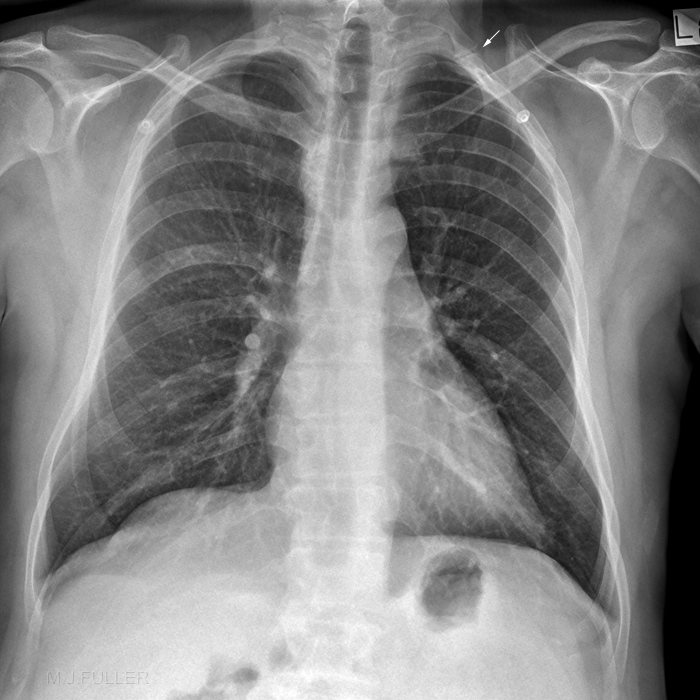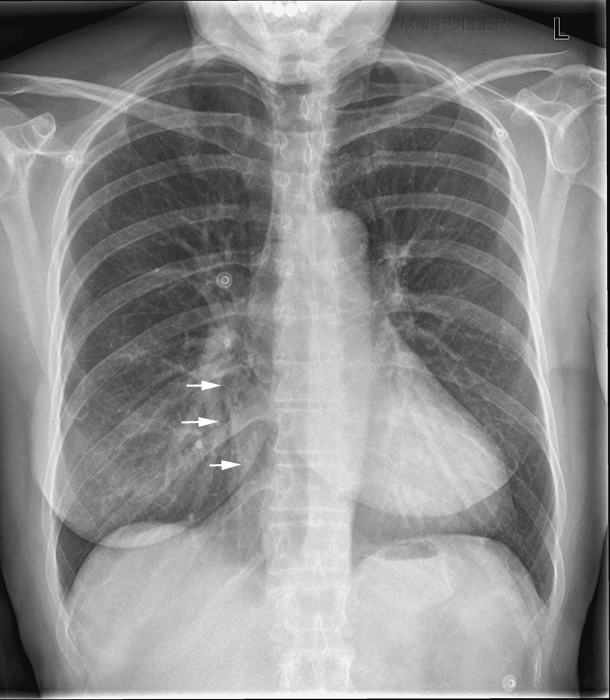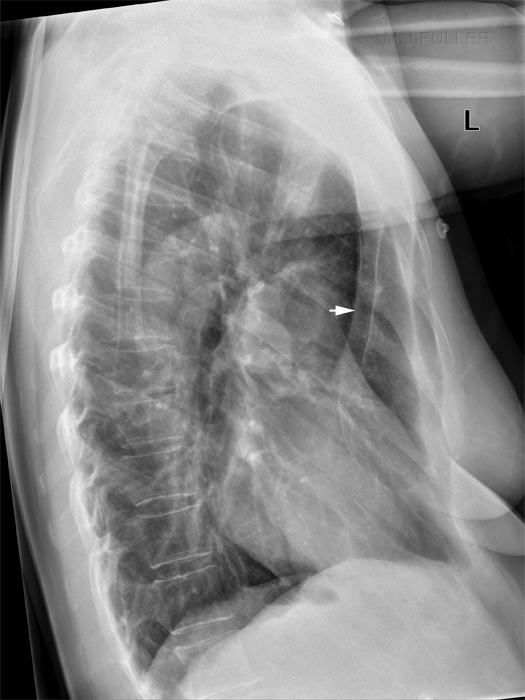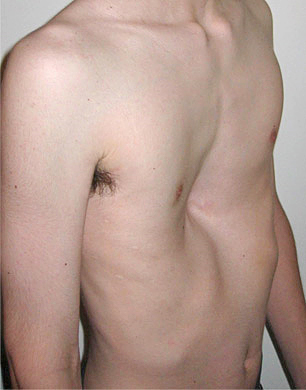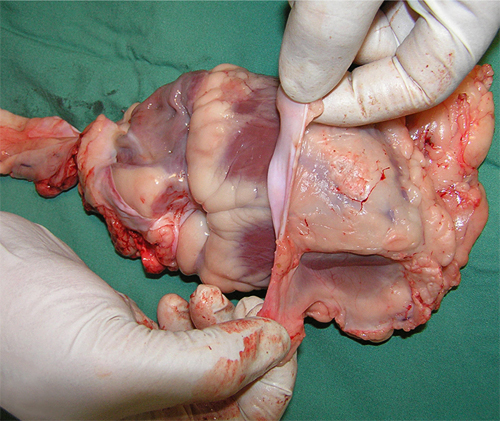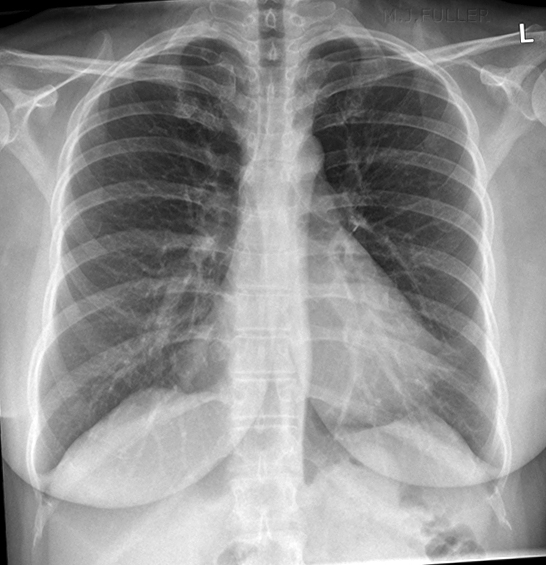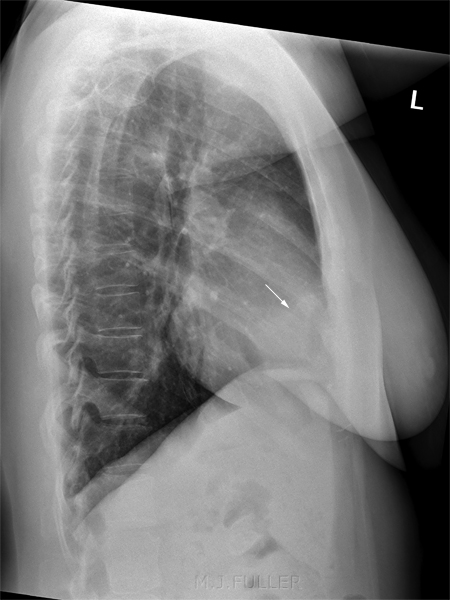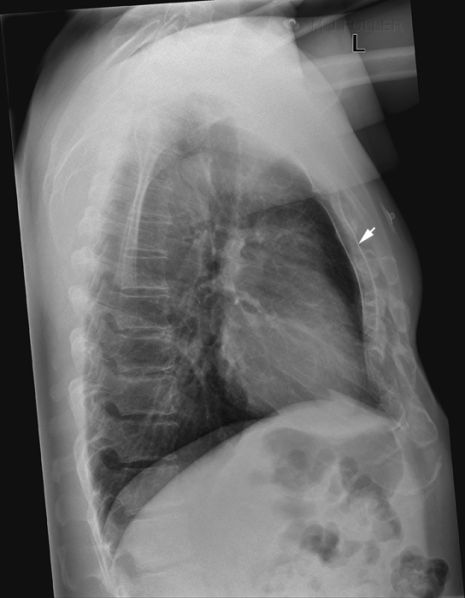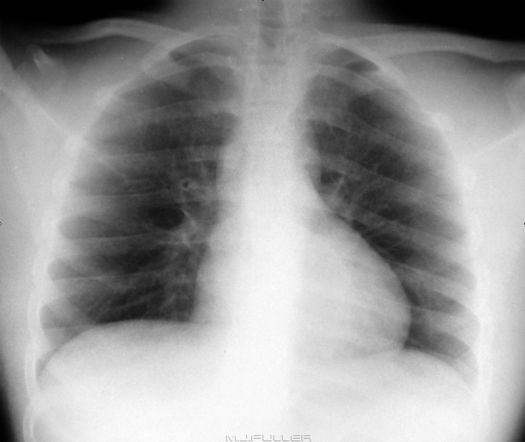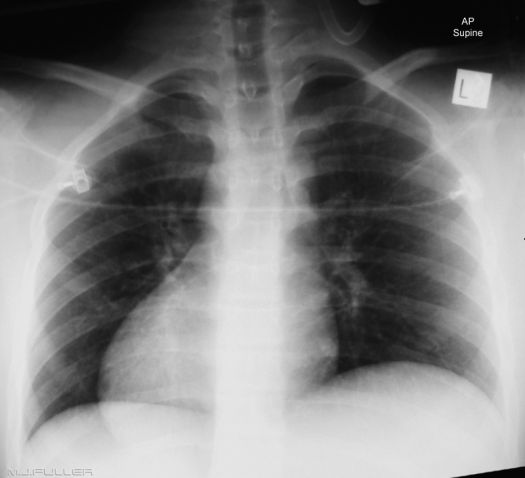Chest Normal Anatomical Variants
Jump to navigation
Jump to search
Introduction
Pectus Excavatum
Pericardial fat
Dextracardia
... back to the Applied Radiography home page
Cervical RibThere are a number of normal anatomical variants visible on chest X-ray images that can mimic pathology. This page considers some of the more commonly occuring normal chest anatomical variants that might cause confusing appearances on chest X-ray images.
Pectus Excavatum
Case 1
This patient presented for chest radiography with a history of recent facial nerve palsy. There is loss of the right cardiac border. The lateral chest X-ray image demonstrates a severe pectus excavatum deformity (arrowed). In these patients the heart tends to be displaced towards the left as a result of the limited space between the depressed sternum and the spine. The loss of the right heart border on the PA image was not a result of a disease process. Pectus Excavatum
<a class="external" href="http://en.wikipedia.org/wiki/File:Pectus1.jpg" rel="nofollow" target="_blank">http://en.wikipedia.org/wiki/File:Pectus1.jpg</a>
Pericardial fat
<a class="external" href="http://jcmr-online.com/content/11/1/15" rel="nofollow" target="_blank">Validation of cardiovascular magnetic resonance assessment of pericardial adipose tissue volume</a><a class="external" href="http://jcmr-online.com/content/11/1/15" rel="nofollow" target="_blank">Adam J Nelson , Matthew I Worthley , Peter J Psaltis , Angelo Carbone , Benjamin K Dundon , Rae F Duncan , Cynthia Piantadosi , Dennis H Lau , Prashanthan Sanders , Gary A Wittert and Stephen G Worthley</a><a class="external" href="http://jcmr-online.com/content/11/1/15" rel="nofollow" target="_blank">Cardiovascular Research Centre, Royal Adelaide Hospital & Disciplines of Medicine and Physiology, University of Adelaide, Adelaide, SA, Australia</a>This is a sheep's heart with the pericardium partly dissected off. Note the pericardial fat.
Case 1
Dextracardia
... back to the Applied Radiography home page
